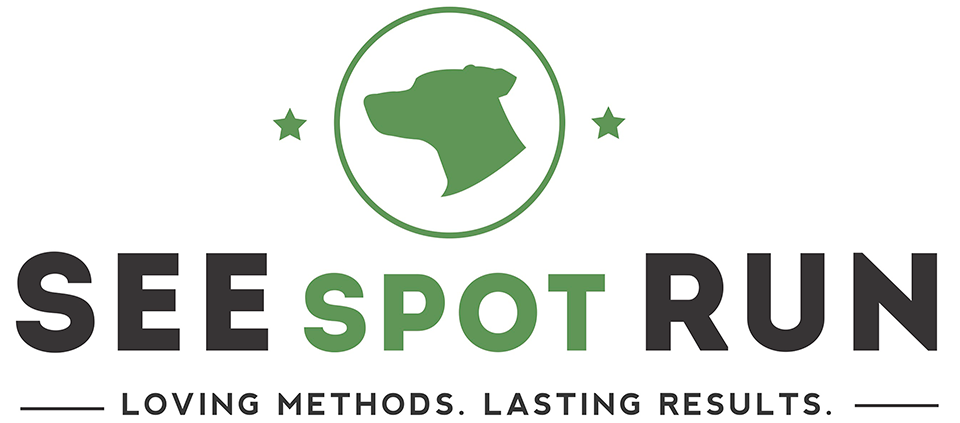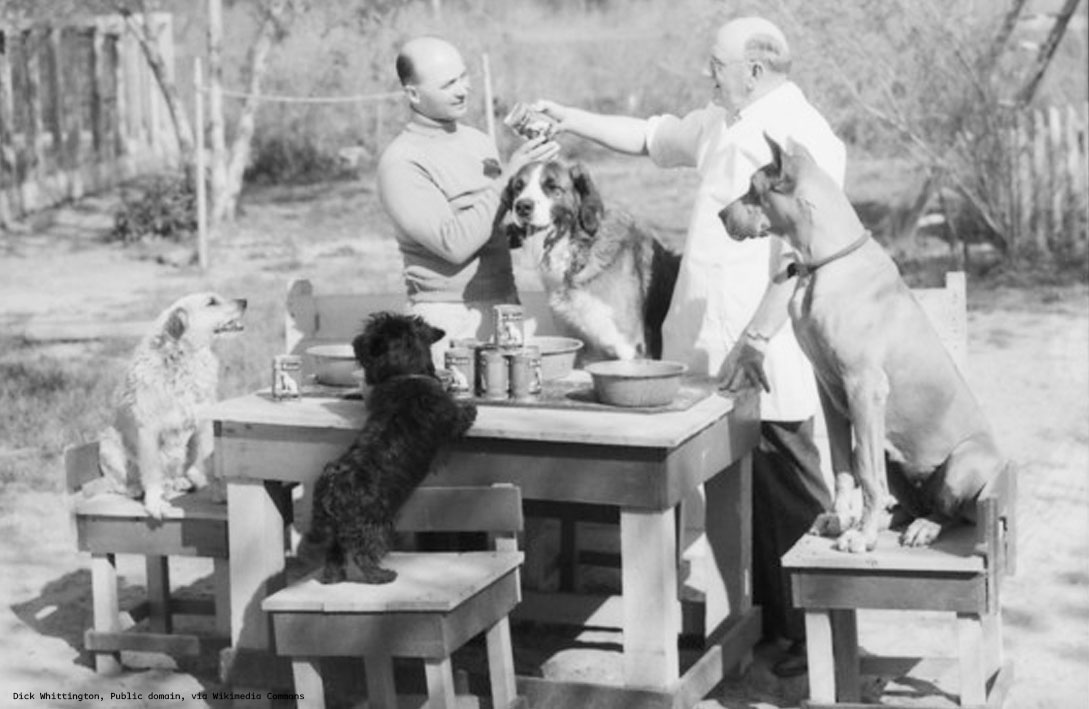Originally published in The APDT Chronicle of the Dog, Spring 2015.
This article stems from a conversation at last year’s APDT conference regarding the advantages and pitfalls of board and train programs. I was asked to share my perspective as a trainer who offers a number of such options, aimed at resolving obedience and behavior problems ranging from housebreaking to aggression.
For trainers who have cut their teeth instructing classes or conducting in-home lessons, board and train may represent a final frontier, to be approached with some amount of trepidation. Between the level of responsibility implied by the format, and its reputation as ethically questionable terrain, it’s no surprise many trainers harbor reservations. And in case you don’t, others certainly do on your behalf, like the blogger behind “Beware! Of Dog Trainers Who Want to Board and Train Your Dog!”
My own induction into the business centered around board and train, initially assisting more experienced trainers and later working independently. In hindsight, I can’t claim pride in all those programs–roughly fifty over two years. But I got an up close look at how board and train works, or in some cases doesn’t, and developed my skills as a handler along the way.
Since opening a full-service facility in 2003, I’ve played a lot with the format and had the opportunity to compare results with those achieved through group classes and private instruction. We’ve fielded a lot of questions, answered legitimate concerns, and gained a solid understanding of the reality behind the image.
Reality v. Perception
How Punishing Is Boot Camp?
The primary concern over board and train among prospective clients reflects its persistent reputation as psychologically brutal and physically punishing. Kennel-based programs seem the most prone to skepticism, eliciting visions of military-style boot camp.
It certainly can be a high-stress experience under the wrong conditions, but it almost never needs to be. We consistently find dogs enjoy our programs, which include alternating group play and training sessions with down time in between (less social dogs are exercised individually). If we haven’t won them over within the first few hours, we will have over the next few days. Even behaviorally challenged dogs usually learn in short order that life at our kennel–for all its newness–isn’t nearly as confusing or frustrating as life at home. Stress tends to fall away rather than build in such cases, as the rhythm and routine of daily training and exercise sink in.
Who sends their dog away for training?
Trainers frequently question the calibre of client interested in board and train. It is implied they must be lazy or uncaring, looking for quick and dirty fixes to all the problems they let fester.
While I’ve consulted with a handful of reprobate owners who did fit that unsavory profile, the majority have been the opposite. Many already invested significant time, effort, and money into training that did not meet their goals. Others unexpectedly found themselves out of their depth with a dog they recently adopted. Some are simply looking to make the most productive use of time their pets would need boarding anyhow, whether during a honeymoon, family vacation, or remodeling project.
In nearly all cases, there is above-average commitment to the dog, acute awareness of training’s impact on both behavior and quality of life, and readiness to make a non-trivial investment toward a successful outcome.
Wouldn’t it be better if the owners were doing the work?
Responsible owners naturally question the wisdom of taking themselves out of the equation, especially in the case of longer programs. Trainers do as well, for legitimate reasons. We all wonder if it might make better sense for them to learn along with their dogs, working together as a team from start to finish.
Ultimately, I’m not convinced that’s always feasible without additional support or intervention, and promoting the notion that it should be puts those teams at risk of giving up out of frustration.
Meanwhile, how many parents regret not teaching their kids algebra themselves? How many riders opt to break their own horses to saddle? No matter how competent and dedicated one may be in any number of areas, there are certain projects it makes good sense to delegate.
Pros and Cons
So, is board and train a good fit for your training practice? Consider the following pros and cons.
Pros
• Efficiency: You will impart skills faster and adjust more fluidly to feedback than the client.
• Consistency: You have control over the dog’s whole experience for the duration of the program.
• Expertise: Mistakes are less likely, which is key when the margin for error is small.
Cons
• Expectations: Managing and meeting client expectations is more critical than with other formats.
• Responsibility: The flip side of greater control is greater responsibility.
• Regression: You may be held more to blame, fairly or unfairly.
When It May Be the Best Option
All things being equal, we rarely recommend board and train ahead of less expensive or invasive alternatives. But certain factors (beyond the obvious convenience) do argue in its favor. Here are some examples, along with actual scenarios from our case files.
Untenable Situation
This could involve a dog whose basic needs have become impossible to meet, or whose behavior prevents owners from performing basic functions like going to work. Risk of serious injury, especially to a child, also counts as untenable, at least where no foolproof management strategy exists. Such cases demand immediate intervention, whether in the form of board and train or owner relinquishment.
Toxic Environment
When the dynamic between dog and owner has deteriorated due to fear or frustration to the point of being fragile or toxic, or the home environment is not conducive to productive work, removing the dog to a neutral location may be key to breaking behavior cycles and facilitating a fresh start. Dogs often have an easier time accepting new rules or protocols outside familiar contexts, and owners may be more inclined to appreciate their dogs’ efforts and successes following a period of separation.
Urgent Deadline
It can be tempting to disparage owners who only come to grips with the fact their dog is ill-mannered in the face of a looming deadline, like the birth of a child or a move to the city. But they deserve credit for attempting to address the problem before it’s entirely too late, and to the extent it can be with professional support, board and train may represent the most reasonable course of action.
Special Needs
An owner who is compromised due to age, injury, or circumstance, will naturally require extra assistance in raising and training his pet. Likewise, certain dogs require special handling in order to succeed. Board and train may not be able to resolve every conceivable mismatch between dog and owner, but for many it represents the best chance at a good long-term outcome.
Real Cases
Below are some examples of real cases in which we either recommended or consented to board and train programs.
Example 1: 1-yr-old Siberian Husky with separation anxiety manifesting in defecation and destructive behavior. His owners were essentially housebound, unable to leave together except during the hours their dog spent at daycare. They had tried crate games, interactive toys, webcams, pheromones, in-home training, and behavior medication. The last straw was having to attend their best friend’s wedding in shifts.
Example 2: 1-yr-old Dogue de Bordeaux with guarding tendencies, unmanageable on leash and living with first-time dog owners in a downtown condo. Owners feared for the safety of visitors, passers-by, and neighbor dogs. Remedial training and socialization was required before the the dog could be handled responsibly at home or in public.
Example 3: 2-yr-old Australian Cattle Dog attacking inanimate objects in and around the converted factory building where he resided. These included door mats, recycling bins, the neighbor’s empty stroller, and every door and gate between their fourth story loft and the property line.
Example 4: 1-yr-old Coonhound raised by experienced dog owners, who had become locked in a bitter and emotional conflict over how to address their dog’s mounting aggression issues. They used the time their dog was in training to reconnect with each other and focus on presenting a united front going forward.
Example 5: 2-yr-old Golden Retriever possessive over toys. He had bitten his owner over a tennis ball, significantly shaking her confidence.
Example 6: 1.5-yr-old littermate Potcakes (Caribbean island dogs) with a history of fear aggression and little positive exposure to children. Owners were expecting their first baby in three months.
Example 7: 1-yr-old Labrador Retriever in need of better leash manners. Owner was busy recovering from the ankle break she’d suffered while walking her.
Example 8: 6-mo-old reactive GSD with visually impaired owner. Puppy was in need of intensive behavior work and remedial exposure to the world outside his house.
Practical and Ethical Considerations
Before booking your first board and train client, there are some practical and ethical questions you ought to consider.
Assessment
The importance of a reliable assessment strategy cannot be overstated. It is critical one knows how to distinguish between solvable and unsolvable problems.
Our assessment begins with an online consultation form, followed by a phone call confirming basic information. We then arrange an in-person interview of between thirty and ninety minutes, either at our facility or in the home. That choice is usually left up to the client, but some cases do call for one or the other. If there are doubts as to how a given dog will respond to the kennel environment or staff, the meeting takes place here. If there is particular concern over the household dynamic, we visit the home.
With both the Siberian Husky and the Dogue de Bordeaux, I insisted on a ninety-minute home visit prior to committing myself (and wound up staying over two hours in both instances). In the first case, this was to better assess the level of separation anxiety, which turned out to be less than one might think based on the history. In the second, it was to confirm the dog posed no discernible threat to either household child. Had my observation of that dynamic turned up red flags, I would have instantly declined the job and pushed for rehoming.
If a dog’s fear of new environments or people presents an obstacle, we might ask the client to attend one or more private lessons at our facility prior to confirming enrollment. We have also required pre-program sessions in cases where client commitment was in doubt.
Remember that saying no is sometimes the best option, even in the face of pressure or at the eleventh hour. One of the sanest decisions I ever made was to refund a client’s deposit on the day she arrived to drop off her Portuguese Water Dog. Over the weeks that had elapsed since the initial consultation, she had failed to supply required veterinary and behavior evaluation forms, and ignored instructions to address her puppy’s poor weight. After she became argumentative, I cut her a check and showed her the door. That puppy would have been a breeze to train, but her owner’s open disregard for our policies and recommendations was ultimately a deal breaker.
Results
In addition to a reliable assessment strategy, one should have a clear vision of the goals you intend to achieve and a solid game plan for how to get there. The ability to set realistic goals and predict likely outcomes is critical to both shaping and meeting client expectations.
If the objective is to prepare the dog for the arrival of a new baby, what specific steps will you take toward that end? What skills will the dog learn, to what degree of reliability, and how will they apply to predictable challenges?
No trainer can guarantee permanent results based on a few weeks of work, much less a mere ten days, but he or she should be able to predict with fair accuracy what may be achieved with a given dog within a given timeframe. In other words, board and train can and should be goal-oriented, while always avoiding pat guarantees.
Suppose we book a recently adopted dog with leash reactivity for our short program (ten days). We can reasonably predict notable improvement in the dog’s leash manners, heightened attention and responsiveness under distraction, and an increased threshold for reaction to triggers, based on the scope of our standard assessment and the results of a hundred prior programs. We may also acclimate the dog to new training aids, and typically conduct a controlled assessment of his or her baseline attitude toward other dogs and capacity for safe off-leash interaction.
In other words, we guarantee to provide significant insight and a foundation on which to build, along with instruction in both general principles and specific techniques. We do not guarantee to “fix the problem.”
As one might guess, a lot rides on the exit and follow up sessions. If highly tailored one-on-one instruction is not your game, you may not want to choose this particular adventure. Either way, there is enormous value in creating and maintaining additional resources, whether in the form of written handouts, a video library, or custom DVD.
Long term results will depend primarily on owner follow through. That said, the trainer has more control over what the dog comes away with in board and train than in other formats. This means greater opportunity exists to build robust behaviors and skills, but also that the trainer may legitimately be held to higher account.
When Training Is the Easy Part
Being a professional trainer does not automatically qualify you to board client pets, particularly ones with behavior problems. Just as serious trainers can resent amateurs claiming pro status without adequate knowledge or experience, licensed kennel operators have been known to voice legitimate concern over trainers taking the board in board and train a bit too lightly.
First, there are legal considerations. Familiarize yourself with local laws. Are you properly licensed and zoned? Do you carry adequate insurance? Training out of one’s home does not relieve one of these or other responsibilities.
Second, there are safety considerations. These include managing flight risk and exposure to household pets or family members, preventing self-injury while confined or isolated, and insuring adequate food and water intake. Some dogs require non-standard enclosures, extra levels of supervision, or extra layers of security. What protocols do you have in place in case of emergency?
For the record, the most disastrous outcomes I’ve experienced first hand had nothing to do with training. One represented a failure at the assessment stage, in so far as critical information regarding a potentially life-threatening medical condition was withheld by the client upon enrollment. That dog, a toy poodle, died on the way to the emergency vet, minutes after suffering a grand mal seizure while sitting in his crate. The other involved underestimating the difficulty in maintaining a labradoodle’s long coat over a three week program. That dog required shaving before returning home, to the utter mortification of his owners, one of whom wept loudly during much of our exit session. This will be referred to at See Spot Run for all eternity as the thousand dollar haircut, as I knocked that amount off his bill in a fit of remorse.
Last Words
Board and train is not for every dog, client, or trainer. However, It is a sound option for many, and the only viable answer for a few. Be legal. Be safe. Be honest. Be effective. And be ready to wake up at 4 AM as needed, to let a dog out.


